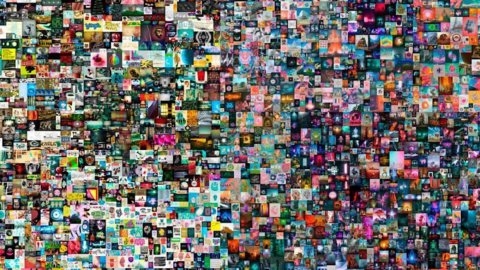The Creative Landscape with Digital Tokens
In the ever-evolving landscape of art and technology, there exists a phenomenon that's not only redefining the way we view creativity but also challenging the very essence of ownership itself. Enter Non-Fungible Tokens (NFTs), the groundbreaking digital assets that have sparked a revolution in the art world. In this exploration, we delve deep into the captivating realm of NFT art, tracing its origins, exploring its significance, celebrating its pioneers, and envisioning its promising future.
Unraveling the NFT Phenomenon
At the heart of the NFT craze lies a simple yet profound concept: digital ownership through blockchain technology. Unlike cryptocurrencies that are interchangeable, NFTs are unique and indivisible, serving as verifiable proof of ownership and authenticity for digital assets. Ethereum's ERC-721 standard, introduced in 2017, laid the foundation for the tokenization of everything from artworks and music to virtual real estate and collectibles.
The Genesis of NFT Art
While NFTs have found applications across various industries, it's the art world that has truly embraced their transformative potential. Leading the charge are visionary artists like Beeple, whose groundbreaking NFT artwork "Everydays: The First 5000 Days" fetched a record breaking $69.3 million at auction, catapulting NFT art into the mainstream consciousness. Other trailblazing artists such as Pak, Grimes, and Micah Johnson have also made waves with their innovative NFT creations, pushing the boundaries of digital artistry and ownership.
Empowering Artists, Redefining Ownership
For artists, NFTs represent a seismic shift in the way they create, share, and monetize their work. By minting their creations as NFTs, artists can assert greater control over their intellectual property, establish direct relationships with collectors, and earn royalties with every resale. This newfound autonomy has empowered artists to explore new mediums, experiment with innovative techniques, and connect with a global audience like never before.
Exploring NFT Marketplaces: Hubs of Creativity and Commerce
Central to the NFT art movement are online marketplaces that serve as bustling hubs of creativity and commerce. Platforms like OpenSea, SuperRare, and Nifty Gateway provide artists with the tools to mint, showcase, and sell their digital artworks to a diverse range of collectors. These decentralized marketplaces offer a level playing field for artists of all backgrounds, fostering a vibrant ecosystem of collaboration and exchange.
Addressing Controversies and Challenges
Despite its meteoric rise, NFT art is not without its controversies and challenges. Critics have raised concerns about the environmental impact of blockchain technology, citing the energy intensive process of minting and trading NFTs. Additionally, questions have been raised about the speculative nature of NFT markets and the potential for copyright infringement in the digital realm. However, proponents argue that NFTs have the potential to democratize art ownership, support emerging artists, and preserve digital heritage for future generations.
Looking Ahead: The Future of NFT Art
As we look to the future, the possibilities for NFT art are boundless. From immersive virtual reality experiences to interactive multimedia installations, artists are only beginning to scratch the surface of what's possible with NFTs. As blockchain technology continues to evolve and new innovations emerge, NFT art will undoubtedly play a pivotal role in shaping the future of creativity and ownership in the digital age.




.jpg)







No comments:
Post a Comment